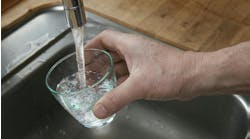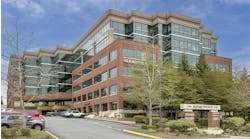PORTLAND, ORE. — Two Oregon locals, living in the Collins View neighborhood here, built a sustainable, energy-efficient home, which recently received U.S.Green Building Council LEED Platinum certification, featuring the first U.S. installation of the Daikin Altherma, an air-to-water heat pump system.
Dawn Bauman and Wendy Broussard began the project in winter 2007 by interviewing several green architectural firms. Since they wanted the most sustainable and energy-efficient home possible, they selected Portland-based Constructive Form Architecture and Design LLC, a firm whose members have sustainable design experience throughout the U.S. and Europe. Brent Hinrichs, an architect at Constructive Form, explained that the homeowners were intent on selecting as many green options as made sense for them.
The preferred option
“The air-to-water heat pump was the preferred option … otherwise we would have been looking at a solar thermal preheat for a modulating electric boiler system given the goal of eliminating fossil fuel,” explained Hinrichs.
Hinrichs and Constructive Form co-owners, Simone Goldfeder, designer, and Kina Voelz, architect, discovered that none of the North American air-to-water heat pump systems under development were available at the time of the project. They also learned the other existing systems had lower efficiencies, especially at winter temperatures. They then contacted every international manufacturer they could find via the Internet, and found Daikin Altherma was an all-electric system with a variable speed “inverter” compressor, providing a high coefficient of performance while delivering combined and integrated hydronic and domestic hot water functionality.
They worked with the local Daikin AC office and when Daikin officials approved the home as an introductory test site for the continental U.S., Daikin Altherma was specified.
Daikin has more than 50 years of experience with heat pumps and has provided more than a million heat pumps to homes and commercial applications each year (approximately 55,000 systems have been installed in Europe), so while Daikin Altherma is new to North America, everyone involved in this project confirmed that a proven history of performance and efficiency was the most important aspect of its selection for the job.
“The inverter technology is a big leap forward,” explained Brent Jacobs, president of Jacobs Heating & Air Conditioning, Portland's largest Daikin Network Alliance partner and the contractor that installed the system.
“The inverter technology, variable speed compressor makes the system run efficiently because it doesn't work at full capacity,“ said Matt Thielke, sales engineer at Jacobs Heating & Air Conditioning.“Therefore, there is not a full load on the house, saving on money and energy.”
The Daikin Altherma consists of three parts — an outdoor unit, which consists of a heat pump with inverter drive, the Hydrobox, which is the indoor unit containing the refrigerant/water heat exchanger, and the water heater, which comes in 50 or 80 gallons.
According to Thielke, the air-source heat pump produces hot water for the radiant floor, provides domestic hot water for the home and is compatible with other systems, such as solar.
In addition to Daikin Altherma, a host of other technologies and products are utilized in the home, such as a 2.4 kW solar photovoltaic system and radiant flooring. The homeowners are selling power back to the grid and providing all of their domestic hot water with the use of Daikin Altherma via the solar array. The house was also pre-plumbed for future solar thermal inputs, and there is a potential for using a reverse-cycle to provide chilled water for partial tempering of the floor.
Broussard and Bauman were fairly active in the design of the home and decided they wanted radiant heat.
“This was the only one [product] we could find that would meet what they were trying to do with a radiant system,” said Thielke. “There was also an interest in solar photovoltaic, so we knew that would work with it, along with solar thermal, which is in place and will be tied into the system at a later time.”
System installation
Construction started in May 2008, and the first installation phase of the mechanical system was the radiant flooring, consisting of four zones, running throughout the home.
According to Brian Erdahl, project manager at Jacobs Heating & Air Conditioning, all of the radiant floor tubing was run to the remote manifolds in the walls and some panel radiators were oversized, so they could match the Btus needed with 120°F water. Next, the contractor ran supply and return feed lines to the mechanical room to supply the radiant floor and panel heaters in four separate zones.
After the plumbing lines were installed and everything was roughed in, the Daikin Altherma outdoor unit and the Hydrobox were installed. A LifeBreath heat recovery ventilator was also installed.
The home's control system was set up, so the thermostat calls for heat, opens the valve, and turns the circulation pump on, but the pump will only run when necessary.

